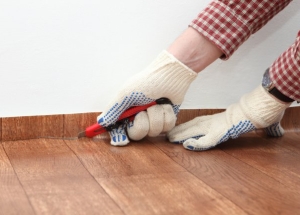Linoleum is a modern and high-tech floor covering with unique performance characteristics, thanks to which such practical material has become widespread. Perfect functionality of linoleum and its practicality, high heat and moisture resistance, ecological safety and the possibility of using in any interior, a variety of design and color solutions, ease of laying by oneself and unpretentiousness in service in combination with an affordable price make it possible to separate linoleum into a separate group of floor coverings. The technology of laying linoleum is so simple that even an inexperienced and unprepared performer can successfully cope with it.
Content
Linoleum laying preparatory work
First of all, we note that all of our recommendations are generalized. Usually, each manufacturer in the technical documentation attached to the flooring indicates precise and specific recommendations for laying a particular material.
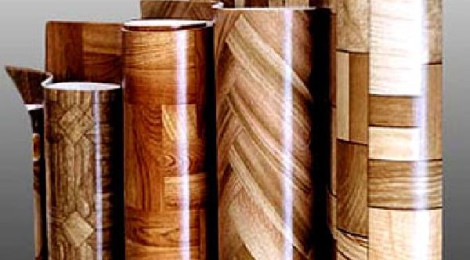
taking measurements
Measurements are carried out for the largest length and width of the room, taking into account doorways and minor bolts (up to 10 cm). Avoid joints. If such a task turned out to be unbearable, then as precisely as possible fit the picture.
Buy rolls should only one lot, because the main shade of the selected material can visually differ. If you need flooring in the stairwells, the best solution you can take is the specialist's help.
surface preparation and coating
Before laying linoleum, you have to prepare the surface, ensuring the room temperature is not less than + 15 ° C. Pay special attention to the humidity level, as exceeding the permissible value can lead to peeling off the coating from the floor. The moisture level is determined by the material of the screed:
- from particle board - 12%,
- from cement - 5%,
- from panels of interfloor overlapping - 4%,
- from gypsum - 3%.
Directly surface preparation involves the work on removing the old coating and skirting, cleaning from foreign objects and priming the floor with a homogeneous mastic and dispersive adhesive, diluted with liquid. At the same time, it is necessary to note some peculiarities of the surface treatment of the floor, depending on the base material.

Concrete base:
- must be dry;
- all cracks are closed.
Base of wood:
- all unprotected sex boards are fixed;
- protruding nails are hammered;
- the boards are closed with plywood or cardboard, fixed with nails;
- excessive moisture is eliminated;
- is prepared in a similar way to a concrete coating.
Stone and ceramic coating:
- tile joints are sealed with a special leveling agent.
Worn coat:
- elimination of residues;
- aligning the composition of the holes are closed;
- grinding.
To prepare the coating for laying it is necessary to spread it face-down and allow it to "lie down" and adapt to the temperature conditions, especially with regard to lump material.
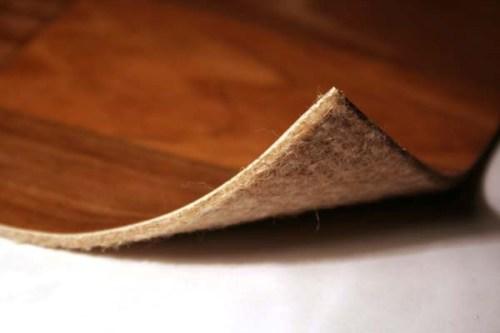
The technology of installation of a floor covering assumes insignificant bend of linoleum upwards on a wall. In case of using also a wall covering, it is necessary to ensure the overlap of two coatings by 5 cm. For the best result, the base of the wall should be treated with a waterproof putty.
tools for laying linoleum
Quality linoleum laying can not be done without such tools as:
- metal or wooden ruler;
- a hammer;
- spatula for leveling the layer of mastic;
- knife (can be clerical);
- roller and paint;
- spray;
- scalpel for elimination of adhering particles;
- a special adhesive for processing joints or an adhesive double-sided tape.
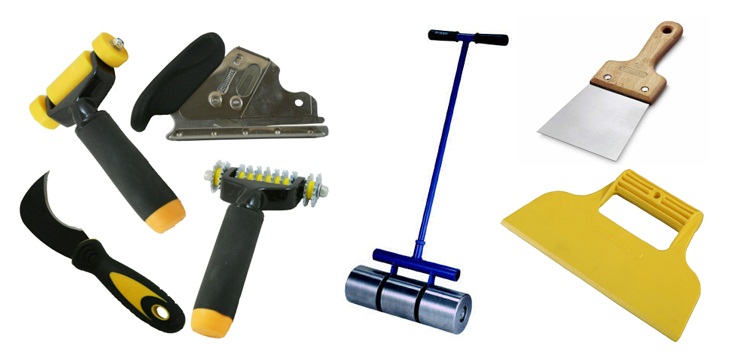
For flooring use mastic glue on a water basis.
- Linoleum on a fabric basis is better to glue on dispersion glue or bituminous synthetic mastic in a layer of 0,5 mm.
- For gluing a heat-insulating linoleum, use a dispersion adhesive with a layer of 0,7 mm.
- It is better to lay a non-basic coating with synthetic rubber and resin mastic with a layer of no more than 0.4 mm.
At home, you can prepare a good adhesive for laying linoleum, but the glue composition of factory manufacturing, no doubt, reliable and quality. A good adhesive is elastic and exfoliates at high loads.
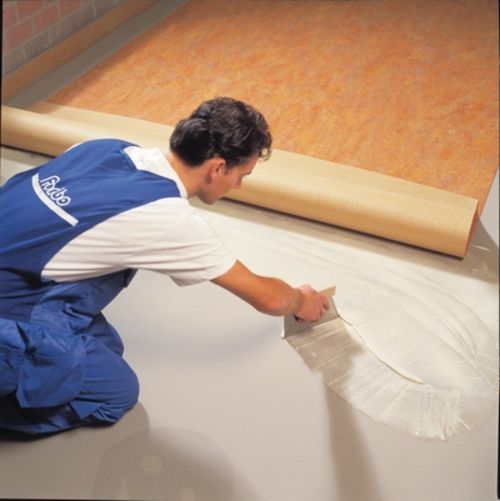
The gluing technology divides glue compositions into: glue for fixation and for continuous gluing, which can be of 5 types:
- one-component,
- two-component,
- polyurethane,
- water-dispersive
- solvent based adhesive.
The most safe and popular are considered water-dispersion adhesive compositions. They are elastic and securely fix the coating. However, experts recommend buying glue along with linoleum. This will allow you to get full consultation from the seller about the most suitable composition.
After choosing the glue, you can begin the procedure of laying linoleum.
Technology of laying linoleum on glue
The technology of laying linoleum on glue is effectively used in premises with an area of more than 20 sq. M., With great patency and increased load on the floor surface.
To get a reliable coverage, you need to do the following:
1. First of all, half-turn the edge of the linoleum, treat it with adhesive composition or attach an adhesive double-sided tape, after removing the protective layer.
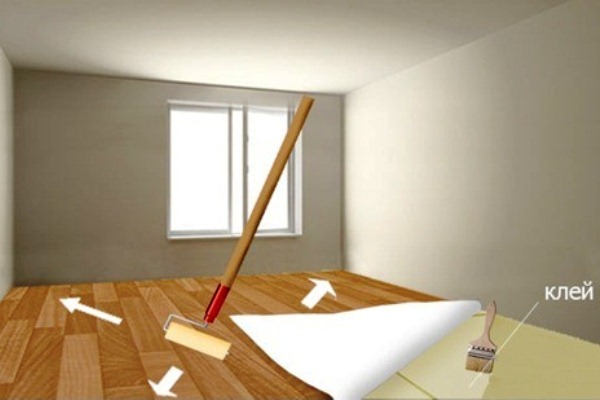
2. Loosen the liner with the adhesive applied back and leave it for a while to dry.
3. After verifying that the linoleum has fallen properly, flatten your hands in the direction from the central part to the edges and corners in order to remove excess air. To do this, you can use a roller, and to ensure that the coating is best settled on areas near the walls, use a spatula or other blunt tool to press it around the perimeter.
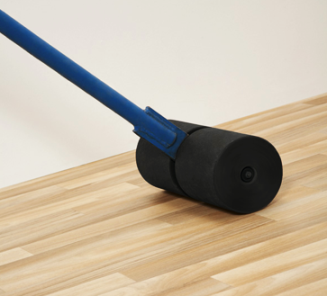
4. With a razor knife, gently cut off excess linoleum at the base. To perform an even cutoff, change the blade more often.
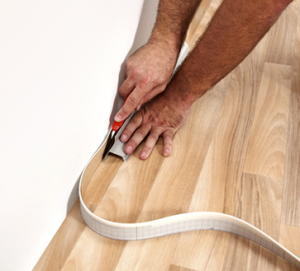
5. Unscrew the other side of the cover and take action first. Carve linoleum in the doorways and protrusions.
When applying floor covering to glue, observe the manufacturer's recommendations regarding the drying time of the composition before installing furniture.
If there is a situation when you have to dock the panels of the coating, then their lapping is lapped with a margin of 10 cm. To do this, you need to bend the edges on the butt sections and apply glue on both canvases. In the places of application with a sharp knife, cut both layers of linoleum and, having got rid of the scraps, glue both edges. As a result, you will get a barely visible joint.
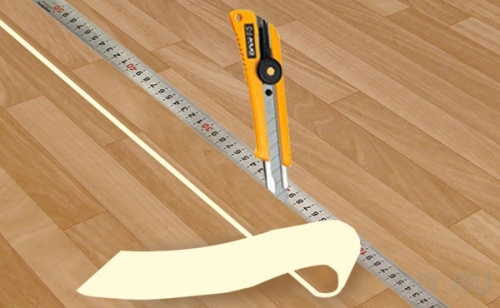
After waiting for the adhesive to dry completely, treat the seam with a special adhesive compound for cold welding, giving additional reliability and tightness.
Detailed laying of linoleum on glue is shown in the video on youtube.


